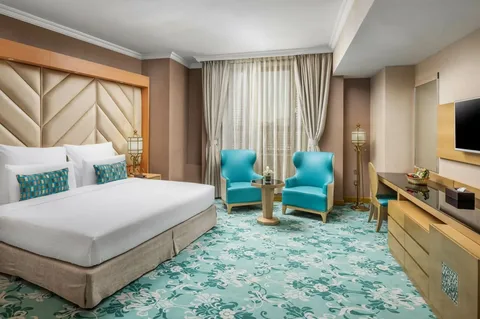When it comes to designing interiors, especially in the retail sector, the goal is to create practical, functional, and cohesive spaces that resonate with customers. As a retail interior designer in Los Angeles I’ve seen firsthand how a well-thought-out design can elevate a brand’s presence and enhance customer experiences. This article delves into key aspects of creating effective retail spaces, offering insights that can be applied to various interior design projects.
Understanding the Importance of Space Planning
Effective space planning is the cornerstone of any successful interior design project. It involves strategically arranging elements to optimize flow and functionality. In retail spaces, this means ensuring that products are easily accessible while guiding customers through a curated shopping experience.
Tips for Effective Space Planning
- Define Zones: Create specific areas for different activities, such as browsing, trying on products, and checkout. This not only enhances customer experience but also aids in managing foot traffic.
- Maximize Visibility: Ensure that key products are easily visible from various angles within the space. This can be achieved through strategic placement and the use of focal points.
- Utilize Vertical Space: In retail environments where floor space is limited, making use of vertical space with shelves, displays, and signage can create an inviting atmosphere without overcrowding.
Choosing the Right Color Palette
The color palette significantly influences the ambiance of a retail space. Colors can evoke emotions, set the mood, and affect purchasing decisions.
Color Psychology in Retail Design
- Warm Colors: Shades like red and orange can create a sense of urgency, encouraging customers to make quick decisions.
- Cool Colors: Blues and greens promote a sense of calm and trust, making them ideal for businesses that emphasize relaxation and well-being.
- Neutral Tones: Using a neutral palette allows the products to stand out while creating a cohesive and elegant environment.
Selecting Functional Furniture and Fixtures
Furniture and fixtures should be both stylish and functional. They play a crucial role in how customers interact with the space and products.
Key Considerations for Furniture Selection
- Comfort: Ensure that seating areas are comfortable to encourage customers to linger longer, potentially increasing sales.
- Durability: Choose materials that can withstand the wear and tear of high foot traffic, ensuring that the space remains inviting over time.
- Versatility: Opt for furniture that can serve multiple purposes. For example, a display table can double as a checkout counter during busy periods.
Lighting Design: The Unsung Hero
Lighting is often overlooked, yet it plays a pivotal role in enhancing the overall atmosphere of a retail space.
Strategies for Effective Lighting Design
- Layered Lighting: Use a combination of ambient, task, and accent lighting to create depth and interest. This can help highlight specific products while providing general illumination.
- Natural Light: Whenever possible, incorporate natural light through windows or skylights. It creates a welcoming environment and can positively influence customer moods.
- Adjustable Lighting: Consider using adjustable fixtures that can change brightness and color temperature depending on the time of day and customer traffic.
Creating a Cohesive Brand Identity
A successful retail interior should reflect the brand’s identity and values. Cohesion between the design and branding enhances recognition and customer loyalty.
Elements to Enhance Brand Cohesion
- Brand Colors: Incorporate brand colors into the design through walls, signage, and displays to reinforce brand recognition.
- Thematic Decor: Use decor elements that resonate with the brand’s message and target audience, creating an immersive experience.
- Consistent Messaging: Ensure that all signage and promotional materials align with the overall design, reinforcing the brand narrative.
Sustainability in Retail Interior Design
Sustainability is increasingly important in modern design. As a retail interior designer in Los Angeles, I prioritize eco-friendly materials and practices to create spaces that are not only beautiful but also responsible.
Tips for Sustainable Design
- Use Recycled Materials: Incorporate furnishings and fixtures made from recycled or reclaimed materials to reduce environmental impact.
- Energy-Efficient Lighting: Choose LED lighting options that consume less energy while providing ample illumination.
- Biophilic Design: Integrate elements of nature, such as plants or natural materials, to create a calming atmosphere and improve air quality.
FAQs
What is the role of a retail interior designer?
A retail interior designer focuses on creating engaging and functional spaces that enhance the shopping experience. They consider aspects like layout, color schemes, lighting, and brand identity to create cohesive environments that resonate with customers.
How can I make my retail space more inviting?
To make your retail space more inviting, focus on effective space planning, comfortable seating, appealing lighting, and a warm color palette. Incorporating elements that reflect your brand’s identity can also create a more welcoming atmosphere.
What are some current trends in retail interior design?
Current trends in retail interior design include the use of sustainable materials, biophilic design elements, interactive displays, and a focus on creating immersive customer experiences.
How do I choose the right color scheme for my retail space?
Consider your brand identity and the emotions you want to evoke in customers. Research color psychology and select shades that resonate with your target audience while ensuring they complement the overall design.
Conclusion
Designing practical, functional, and cohesive retail spaces requires a strategic approach that considers every element, from space planning to brand identity. By incorporating these principles, you can create an inviting atmosphere that not only enhances the customer experience but also drives sales. As a retail interior designer in Los Angeles, I encourage business owners to embrace thoughtful design that reflects their brand and engages their customers.












